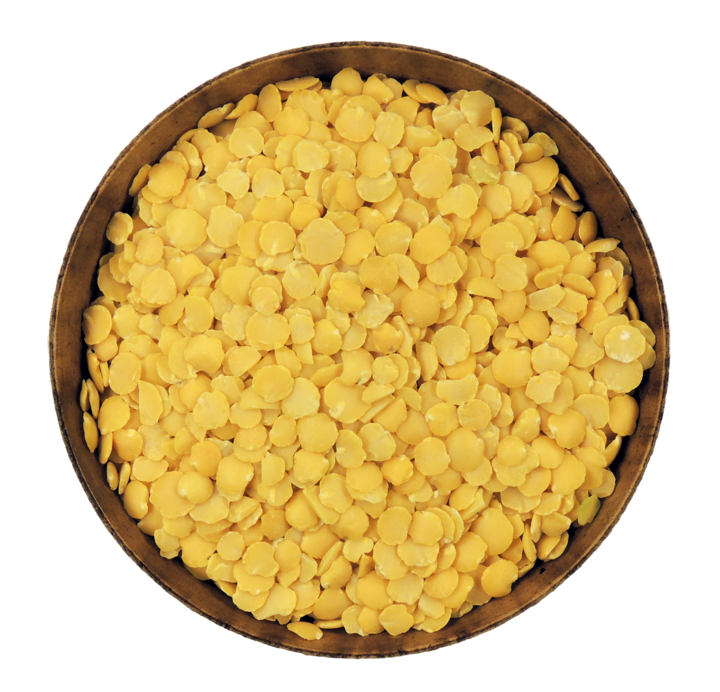Profile
The cultivated, seed or edible lentil belongs to the legume family. Formerly considered a poor man's food, today lentils are a valuable foodstuff due to their nutrient content.
Lentils prefer dry, warm climates and poor soils. With the changing climate in Austria and the desire for regional and healthy food, cultivation is increasing in our latitudes. According to the AMA's area analysis, lentils were grown on 1,327 hectares in 2023.
Usage


Lentils are classified by color, size and origin. The green lentils are the fresh, unpeeled fruits with a yellow core. Thus, after peeling, you get the yellow lentils. These turn brown over time, resulting in the classic brown lentil variety.
Red lentils are usually available on the market peeled. In the unpeeled state, the bright orange-red seed of the fruit is surrounded by a purple to brownish skin. Due to their appearance, the small black Beluga lentils are named after the Beluga caviar of the same name and are particularly aromatic.
Giant lentils are about 7 mm in diameter, flat plate lentils are 6-7 mm, medium lentils are 4.5-6 mm, and potbellied sugar lentils are about 4 mm.
Raw lentils contain unpalatable, toxic ingredients, so-called lectins, which are rendered harmless by cooking to 75 °C. Lentils must therefore always be cooked before consumption, but not necessarily soaked beforehand. Soaking shortens the cooking time, which is only about 10 to 15 minutes for peeled lentils.
Lentils are particularly characterized by their high content of protein (about 25%) and compound carbohydrates (about 60%) and a low fat content (about 2%). They contain in particular B vitamins, potassium, calcium, magnesium, phosphorus, iron and zinc.
Botany
Annual lentil plant grows mostly erect 15-50 cm high and branched from the bottom. The alternate leaves arranged on the stem are pinnate in pairs, with a simple winding tendril instead of the terminal leaflet. Despite these tendrils at the end of the leaves, the plant does not climb much, if at all.
The inflorescence bears one to three butterfly flowers typical of the family. The bluish white corolla is relatively small at 5-6 mm and is framed by the green sepals. The pointed teeth of the sepals are twice as long as the calyx tube. The main flowering season is in June. Lentils reproduce mainly by self-fertilization; cross-pollination by bees or bumblebees occurs rather rarely. The legume formed is rhombic, flat, 8-15 mm long and 4-8 mm wide. It contains only one to two discus-shaped, flat, brownish green to grayish brown, reddish or yolk-yellow, unicolored or finely dotted to marbled seeds.
Agricultural aspects
The lentil plant needs a warm, dry climate with good rainfall distribution during the growing season for optimal growth. It prefers soils poor in clay, scree soils, shell limestone and sandy limestone. Lentils are plants that grow in poor, dry soils where other crops do not thrive due to nutrient deficiencies. Good soils with high nutrient content result in abundant vegetative growth but low pod and seed set.
Lentils are often cultivated in mixed crops. They require a well loosened, medium-fine, weed-free seedbed for emergence. Lentil tolerates temperatures from -5 to -9° C and can therefore be cultivated as a winter crop in mild areas, such as in the Mediterranean region. It is usually sown with a common grain drill from the end of April to the beginning of May at a sowing depth of 4-5 cm and seed rates of 80-100 kg/ha for large-seeded varieties and 40-60 kg/ha for small-seeded varieties. The row spacing should be 15-35 cm. Germination takes place at a temperature from 4-5 °C.
It is best to plant lentils after cereals, and in weedy areas after root crops (especially potatoes). Due to the lack of self-tolerance, i.e. susceptibility to crop rotation diseases, if lentils are grown again the following year, a cultivation break of 4 to 6 years must be observed. Cereals are usually grown after lentil.
Since lentil matures irregularly, from bottom to top, it is difficult to choose the right harvest time. Harvesting is done with a combine as soon as the lower pods are brown and the grains are hard. The haulm is usually still green at this time.
Problem nanoviruses
Nanoviruses, such as pea necrotic yellow dwarf virus (PNYDV), infect legumes such as peas, field beans, vetches, lentils and chickpeas. They are transmitted by aphids, mainly the green pea aphid and black bean aphid. If infection occurs early in plant development, it can lead to enormous yield losses and even total failure. In research projects, we were able to show that PNYDV occurs throughout Austria.
Last updated: 07.11.2024
automatically translated